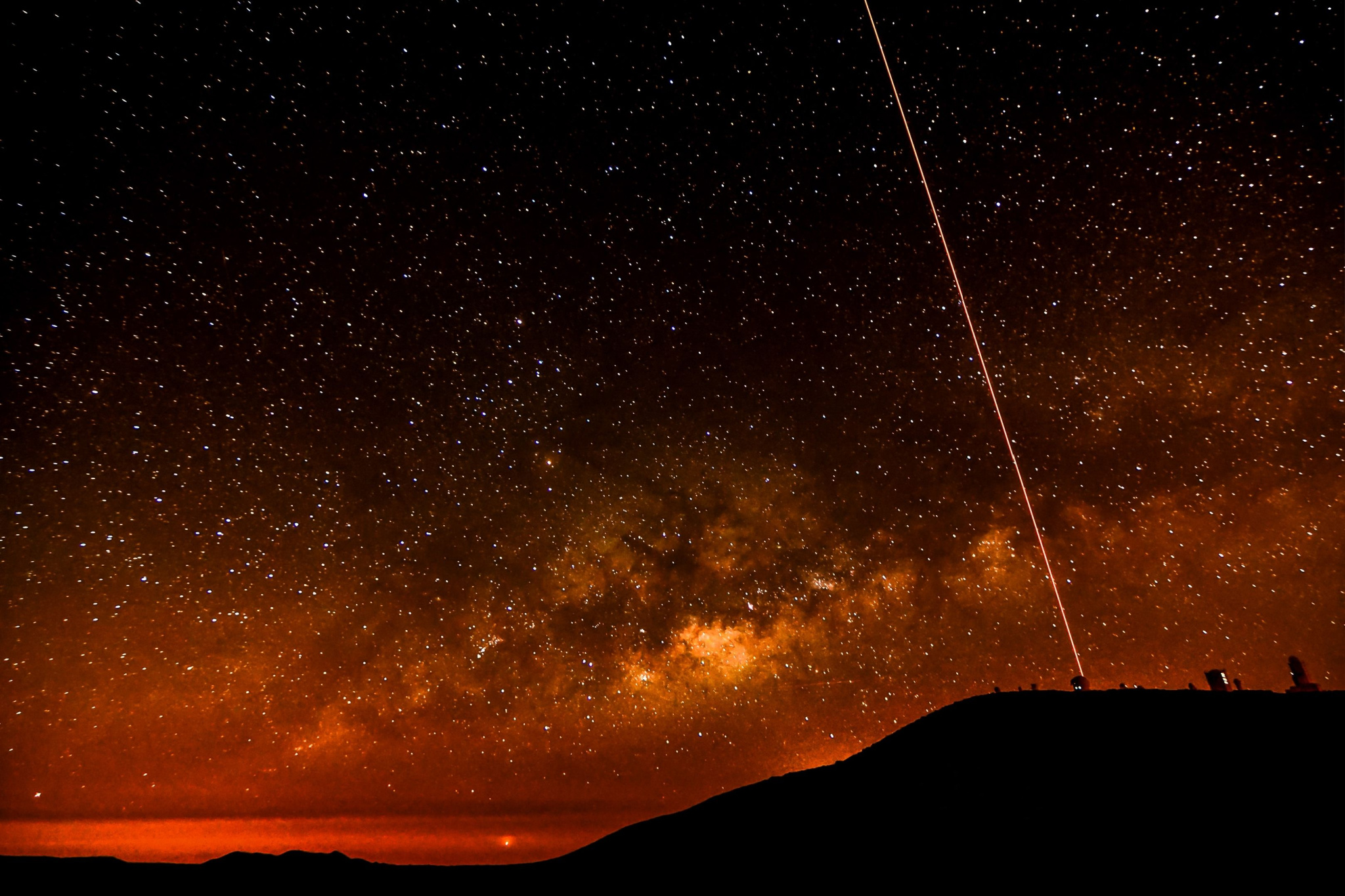ESA-funded Optical Ground Station for fast and secure laser satellite communications begins construction in Greenland

The optical laser communications ground station is funded under ESA’s Optical and Quantum Communications - ScyLight programme. Construction is expected to conclude in late 2026, with widespread benefits for data-hungry commercial and institutional operators.
The European Space Agency’s (ESA) Directorate of Connectivity and Secure Communications has partnered with Astrolight, a pioneer in laser-based telecommunications systems, to build its first Optical Ground Station in , Greenland. This joint endeavour driven by Denmark, with technical expertise from Lithuania, will enhance Europe’s satellite communications capabilities with unprecedented speed and security for satellite communications ahead of a forecasted expansion in satellite launches.
This new Optical Ground Station will be equipped with state-of-the-art laser communications technology. Using this advanced communication medium, the station will provide secure, high-speed data transfers from satellites in low Earth orbit (LEO) that are orders of magnitude faster than traditional systems.
Legacy ground stations that make use of the Radio Frequency (RF) spectrum are unable to keep pace with the increase in demand of data transfer by modern satellite sensors and their applications. What’s more, the sheer number of satellites in LEO is expected to increase by 190% within the next decade, according to a World Economic Forum report. This development is predicted to put a strain on RF Ground Station infrastructure, which will affect the quality of data transmitted, reduce the available bandwidth time for each satellite, and limit the development of businesses reliant on space data.
The introduction of laser-based communication systems promises to remove this bottleneck. Instead of being measured in hours, the download of terabytes of data can take place in less than a minute. It will enable the ground station to serve more satellites as they are deployed into orbit. With the ability to transfer more data at faster speeds and a fraction of the cost of RF stations (more than 10 times the data throughput at 70% lower cost per gigabyte) Optical Ground Stations will allow both the satellite manufacturing industry and downstream applications market to thrive.
Upon completion, this installation will be the northernmost ground station of its type. Its addition to ground-based data networks increases the overall resilience and security of Europe’s communications systems: laser communications reduce the possibility of interception, elevating privacy, and complement the capabilities of RF stations and undersea cables, which have proven vulnerable to interference by external actors.
ESA’s Advanced Research in Telecommunications Systems (ARTES) programme is funding Astrolight’s Optical Ground Station. ARTES is aimed at developing cutting-edge technology and exploring innovative concepts that in turn stimulate the wider economy, creating jobs across every industry. This project falls under ESA’s Optical & Quantum Communications – Scylight programme, which supports European and Canadian industry with funding, multi-disciplinary expertise, business knowledge and opportunities to develop innovative satcom products.
In addition to boosting European economic growth and security, the advanced telecommunications capabilities introduced by the Kangerlussuaq Optical Ground Station will also support scientific applications. The ground station will elevate Earth observation capabilities for optical, hyperspectral, radar and infrared imaging data with unconstrained, high-fidelity data-throughput. Major operators in this domain include commercial satellite operators as well as space agencies and governmental institutions providing vital public services. For these services, speed is of the essence: search and rescue efforts will benefit from the OGS’ near real-time and highly accurate information about environmental conditions to inform coordinating bodies and assist boots on the ground. Scientific projects relying on large imaging sets with a high data footprint will also benefit from this increased download speed and data fidelity to track glacier movement, wildfire progression, oil spills and ship traffic. It will allow scientists to fully leverage the advanced capabilities of modern sensors without having to compete for highly sought-after RF bandwidth time, and incur the risk of incomplete or corrupt data.
“Fast and secure optical data transmission is essential for keeping up with the rising data demands from next-generation satellites, while enhancing ground infrastructures enables operators and policymakers to improve crucial services for when our users need them most,” said Laurent Jaffart, Director of ESA Connectivity and Secure Communications. “With this project, we’re continuing to answer to European safety and security needs by transforming connectivity and secure communications from high latitudes. We look forward to further milestones, while further enhancing the resilience and sovereignty of our Member States with Astrolight.”
“The optical ground station in Greenland will bring near real-time, high-resolution satellite data directly within reach of Arctic Command and Greenlandic authorities, improving search and rescue reliability, disaster detection, and critical infrastructure management,” says Peter Stensgård Hansen, Managing Director for Astrolight Denmark. “By situating the facility in Greenland’s Arctic desert, which is often free from interfering cloud cover, we can ensure consistent performance, strengthening communication security for the region as a whole.”
ESA and Astrolight’s investment in this new type of ground station reflects a larger commitment to supporting the widening business applications of space data across industries. The Kangerlussuaq Optical Ground Station will contribute to increasing Europe’s technological independence, competitiveness and security with a redundant communications infrastructure that can ensure the continuity of key services. In addition to the deployment of Optical Ground Stations, ESA’s Connectivity and Secure Communications is also developing laser communications capabilities with the High thRoughput Optical Network (HydRON), an in-orbit high-throughput optical network designed to demonstrate data rates reaching into the ultra-fast terabits-per-second range.


